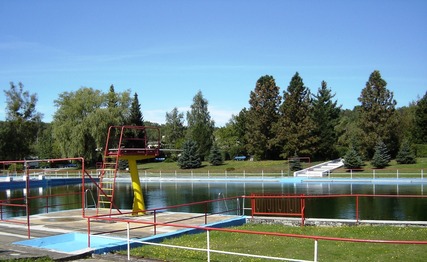Coal mining in the Erika pit near Laubusch began in 1918, driven by the company Ilse-Bergbau AG (I.B.A.). The pit was named after the grand-daughter of company founder Dr Hugo Kunheim. The settlement of Neu Laubusch had to make way for the pit as early as in 1924. The village of Laubusch suffered the same fate in 1940/1941. A total of 375 people were resettled.
The construction of the new district Kolonie, the garden town Erika, began in 1917. The plans dated back to 1914. The I.B.A. expert Ewald Kleffel (1878 – 1952) acted as chief architect; he had previously been involved in planning the garden town of Marga (1906/1907) near Senftenberg. The first building to be constructed in Kolonie Erika was the ‘Kaiserkrone’, a guest house and pub. A school, business premises, administrative buildings and the pub ‘Erika’ (later arts and leisure centre) soon followed. The development culminated in the completion of the Protestant Barbara Church (1938).
The opencast mine Tagebau Erika was renamed to Tagebau Laubusch in 1947. 16 years later it was exhausted. Raw lignite from other pits continued to be refined at the Laubusch briquette factory up until 1993. The factory was later demolished.
The lakes Erikasee, Kortitzmühler See and Lugteich all originate from the Tagebau Laubusch opencast mine. Erikasee is the largest with a surface area of about 0.6 square miles (1.5 km2).
The water body is protected by conservation status. The large-scale nature conservation project Lausitzer Seenland (Lusatian Lake District) has taken up the cause of preserving this unique habitat, home to many plant and animal species. The diverse structure of the landscape and the combination of land and water in particular provide excellent conditions.
Laubusch, a district of Lauta since 2001, nowadays consists of the settlement, Bergmann’s homesteads and the Kolonie (garden town Erika). The arts and leisure centre houses a tradition room created by the local heritage association that is worth seeing.

